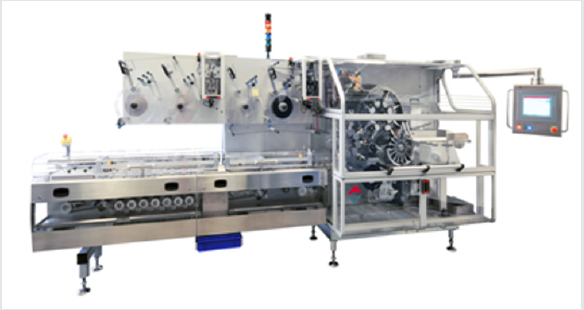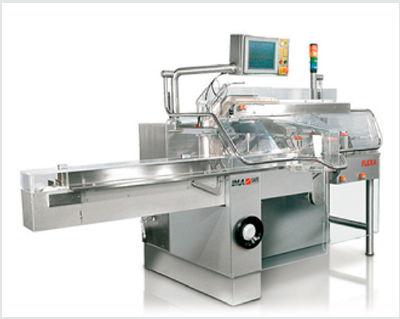
Lupine Publishers Group
Lupine Publishers
Menu
ISSN: 2637-4579
Research Article(ISSN: 2637-4579) 
Improvement of Production Lines in a Pharmaceutics Framework Volume 4 - Issue 2
Khanchel F1, Majri H2, Beyaa R2 and Lakhoua MN3*
- 1Department of pathology, Habib Thameur Hospital, FMT, University of Manar, North Africa
- 2National Engineering School of Carthage, University of Carthage, North Africa
- 3Research Laboratory Smart Electricity & ICT, SEICT, National Engineering School of Carthage, University of Carthage, North Africa
Received: April 07, 2020; Published:July 17, 2020
*Corresponding author: Lakhoua MN, Research Laboratory Smart Electricity & ICT, SEICT, National Engineering School of Carthage, University of Carthage, North Africa
DOI: 10.32474/OAJBEB.2020.04.000181
Abstract
Improving productivity is a key factor for all business leaders and managers. Through the optimization of production performance in a company, we have focused our work on its competitiveness and ensure its perfection in the concept of internal and external competition. The aim of this paper is to present an action to improve a production line in a pharmaceutics framework after its passage from manual mode to automatic mode. In fact, system analysis technique is used in order to study the current state of the chain in the one hand and a study of the existing of the production line is presented on the other hand.
Keywords:Production line; improvement; pharmaceutics framework
Introduction
In order to impose themselves on the market opposite customer
requirements and constant competition, any pharmaceutical
industry seeks to increase its productivity with the lowest cost.
Indeed, the approach to improve productivity is based on a
resource management method [1]. It automates its production
lines, reduces malfunctions, reduces waste and eliminates delays
[2]. It contributes to improving the quality of the product delivered,
increasing the customer’s own value and targeting the international
market in order to market these products.
In a first part, we analyzed our system in a systemic way. In
fact, this method makes it possible to study the raw material chain
and the packaging item well, up to a finished product delivered
to customers. This is how this method will analyze any technical
design at any level [3-5]. In the second part of our study of the
existing, we will cite the other causes which lead to these stops, as
well as the weak points of the whole chain using the 5M method
which allows drawing the shortcomings of each workshop by which
passes the sachet product [6, 7]. In this paper we proposed to
integrate a “Cartoner” machine to make the line automatic instead
of manual, and using this machine we will mainly reduce the stops,
increase the good quality of the products thus preventing delays in
batches and avoid irregular changes to manufacturing schedules.
Study of the existing production line
Before starting a long-term improvement action in a production
line, a preliminary stage is essential; it is the study of the existing
of this line. This phase consists in analyzing the current state of the
chain. It leads to an evaluation of functions, structures and systems.
This analysis makes it possible to identify anomalies, downtime,
faults and existing qualities, and according to these we establish the
appropriate diagnoses and improvements.
The production stoppages that penalize productivity are
twofold [8]:
A. Induced stops
These are the periods during which the means of production is stopped for external reasons: lack of supply, lack of staff, lack of energy, etc. In this category, the stops are due to a lack of organization.
B. Clean stops
These are the stops attributable to the means of production. We
can carry out a more detailed analysis of the reasons for stopping
by distinguishing:
a) Malfunction downtime: this is the time due to a
malfunction of the means of production.
b) Exploitation downtime: this is the time due to service
outages, quality issues, etc.
c) Functional downtime: this is the downtime required for
manufacturing. It can be broken down into: manufacturing
change time; control time; programmed tool change time;
setting time; maintenance time.
To better express the variation of these stops we have applied
the Pareto diagram which is a simple method to use to draw the
important causes linked to these stops.
Proposal for an action to improve a production line
At the end of a detailed study, it is summarized that the lack of
formed case leads to these consequences: downtime, waste, poor
quality, delays in production, low productivity, etc. So we proposed
to integrate a “Cartoner” machine to make the line automatic instead
of manual, and using this machine we will mainly reduce the stops,
increase the good quality of the products thus preventing delays in
batches and avoid irregular changes to manufacturing schedules.
Before moving on to the choice of suppliers, we must draw the
characteristics and description of the cartoner machine offered
by each supplier. So, we will justify the use of a computer tool to
simulate the dynamic behavior of the sachet line precisely the
two packaging workshops [9, 10]. The methodology is not only to
provide a common thread for any simulation project, but also to
ensure, before the start of the project, that we have all the relevant
data [11, 12].
a) Cartoner «PMM.CAM »
(Figure1) shows the automatic horizontal cartoner machine
with intermittent movement PMM manufactured by the CAM group.
b) Cartoner « ACMA.VOLPAK »
(Figure2) shows the automatic horizontal cartoner machine
with intermittent function PAK manufactured by the VOLPAK group.
c) Cartoner « FLEXA A. IMA) »
(Figure 3) shows the automatic horizontal cartoner machine
with intermittent function PAK manufactured by the IMA-Industries
group.
Conclusion
In this paper, we engaged on a problem of automation and
improvement of productivity in the pharmaceutical sector. To lead
to this work, we started with the functional analysis of one of these
production lines. Then, we continued our work by collecting vital
data for our study of the existing in order to recognize the origins of
dysfunction causing the largest losses in terms of production time.
Then, in order to propose favorable solutions making it possible to
uproot the sources of waste.
In addition, we carried out a study of the automated chain
based on a simulation of a model very close to reality in order to
identify the evolution of productivity and downtime before and
after progression. By applying the 5M approach to show the defects
of workshops such as packaging which have a great influence on
downtime by their roles.
Starting from this study of a proposal of an action to improve
a production line in the pharmaceutical sector presented in this
paper, we will extend the analysis and modeling methodology
to different actions
References
- Kumar A, Gureja L (2016) Transformation of an Organisation into a Lean Organisation through Value Streem Mapping A case study. IJARESM 4(1) : 10-16.
- Benson B, Hoshin K (2016) the fundamental starting point for lean success. Cost Management 15-18.
- Lakhoua MN (2018) the need for systemic analysis and design methodology of the medical equipments. International Journal of Applied Systemic Studies 8(1): P. 76.
- Lakhoua MN, Khanchel F, Laifi S, Khazemi S, et al. (2016) System analysis of medical equipment for healthcare management. Annals of the Faculty of Engineering Hunedoara 14 (4): 17.
- Khanchel F, Lakhoua MN, Helal I, Jouini R, Chadli A, et al. (2019) the Need for System Analysis of a Pathology Process.
- Beyaa R, Majri H (2016) Automatisation d'une ligne de production : Etude de la situation existante, situation projetée, Master. ENICarthage.
- Mitchell A, Millstein SJ (2014) Takt Time Grouping: Implementing kanban-flow manufacturing in an unbalanced, high variation cycle-time process with moving constraints. International Journal of Production Research 52(23): 6863-6877.
- Zhen He, Xu-Tao Z, Min Z (2014) Reducing the voluntary turnover rate of dispatched employees by the DMAIC process. Total Quality Management & Business Excellence 25(7-8): 842-855.
- Lakhoua MN (2019) Review on Smart Hospital Management System Technologies. Research and Science Today 1(17): 187-197.
- Lakhoua MN (2019) Methodology of Analysis based on a Lean-Management. Acta Technica Corviniensis - Bulletin of Engineering Fascicule 12(3): 69-72.
- Sassi I (2017) Mise en place du Lean Manufacturing sur une ligne de production. Mémoire Ingénieur en GSIL ENICarthage.
- Hamdi A (2016) Elaboration du système de production avec pilotage des chantiers d'amé Mémoire Ingénieur en GSIL ENICarthage.
Editorial Manager:
Email:
biomedicalengineering@lupinepublishers.com

Top Editors
-

Mark E Smith
Bio chemistry
University of Texas Medical Branch, USA -

Lawrence A Presley
Department of Criminal Justice
Liberty University, USA -

Thomas W Miller
Department of Psychiatry
University of Kentucky, USA -

Gjumrakch Aliev
Department of Medicine
Gally International Biomedical Research & Consulting LLC, USA -

Christopher Bryant
Department of Urbanisation and Agricultural
Montreal university, USA -

Robert William Frare
Oral & Maxillofacial Pathology
New York University, USA -

Rudolph Modesto Navari
Gastroenterology and Hepatology
University of Alabama, UK -

Andrew Hague
Department of Medicine
Universities of Bradford, UK -

George Gregory Buttigieg
Maltese College of Obstetrics and Gynaecology, Europe -

Chen-Hsiung Yeh
Oncology
Circulogene Theranostics, England -
.png)
Emilio Bucio-Carrillo
Radiation Chemistry
National University of Mexico, USA -
.jpg)
Casey J Grenier
Analytical Chemistry
Wentworth Institute of Technology, USA -
Hany Atalah
Minimally Invasive Surgery
Mercer University school of Medicine, USA -

Abu-Hussein Muhamad
Pediatric Dentistry
University of Athens , Greece

The annual scholar awards from Lupine Publishers honor a selected number Read More...







